Table of Contents
What Is Punctuation?
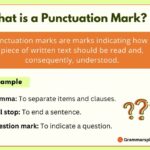
Punctuation refers to the symbols used in writing to separate sentences and clarify meaning. These symbols help to indicate pauses, intonation, and the structure of sentences, making the text easier to read and understand.
Below is a list of common punctuation marks, their uses, and examples.
1. Period (.)
Use: To end a declarative sentence or indicate abbreviations.
The period is used at the end of a sentence to show that it is complete. It is also used in abbreviations like “Mr.” or “Dr.” to shorten words or phrases.
- She is going to the market.
- Dr. Smith will visit tomorrow.
2. Comma (,)
Use: To separate items in a list or clarify parts of a sentence.
The comma is used to separate ideas, elements in a list, or phrases within sentences. It helps to avoid confusion and add clarity.
- I bought apples, oranges, bananas, and grapes.
- After dinner, we went for a walk.
3. Question Mark (?)
Use: To indicate a direct question.
The question mark is placed at the end of a sentence to signify that it is a question.
- What is your name?
- Are you coming to the party?
4. Exclamation Mark (!)
Use: To express strong emotion or emphasis.
The exclamation mark is used to convey excitement, surprise, or urgency in a sentence.
- Wow! This is amazing!
- Watch out! The floor is slippery.
5. Colon (:)
Use: To introduce a list, explanation, or quotation.
The colon is used to present information following a statement, such as a list, an example, or further clarification.
- He brought three things: a notebook, a pen, and a calculator.
- Remember this: Hard work always pays off.
6. Semicolon (;)
Use: To connect closely related independent clauses.
The semicolon links two independent sentences that are related, or it separates items in a complex list.
- I have a big test tomorrow; I need to study all night.
- She visited Paris, France; Rome, Italy; and Berlin, Germany.
7. Quotation Marks (” “)
Use: To indicate speech or quotations.
Quotation marks are used to highlight someone’s exact words or a title within a sentence.
- She said, “I will meet you at 5 PM.”
- The book titled “The Great Gatsby” is a classic.
8. Apostrophe (‘)
Use: To show possession or create contractions.
The apostrophe is used to indicate ownership or to combine words into contractions.
- This is John’s book.
- They’re going to the park later.
9. Parentheses ( )
Use: To add extra information or an aside.
Parentheses enclose additional details, explanations, or side notes in a sentence.
- He finally answered (after thinking for a while) that he would join us.
- The concert (which was sold out) was amazing!
10. Dash (—)
Use: To indicate a break in thought or emphasize additional information.
The dash adds emphasis or interrupts the flow of a sentence to add a dramatic effect.
- She loved the cake—it was delicious!
- The result was clear—he had passed with flying colors.
11. Hyphen (-)
Use: To join words or split a word at the end of a line.
The hyphen connects compound words or prefixes to the main word and is also used to divide words at line breaks.
- My brother-in-law is a lawyer.
- This is a well-written article.
12. Ellipsis (…)
Use: To indicate a pause or omitted words.
The ellipsis suggests a pause in thought, or it shows that part of the text has been left out.
- I was thinking… maybe we could try a new restaurant.
- “To be, or not to be… that is the question.”
13. Slash (/)
Use: To show alternatives or fractions.
The slash is used to present options or indicate a division in fractions.
- You can use butter/margarine for the recipe.
- The score was 3/4 in favor of the visiting team.
14. Brackets [ ]
Use: To add explanatory or missing information within text.
Brackets are used to insert additional details, corrections, or comments, especially in quoted material.
- The report stated, “The results [of the survey] will be published soon.”
- The article said she was born in 1990 [incorrectly].
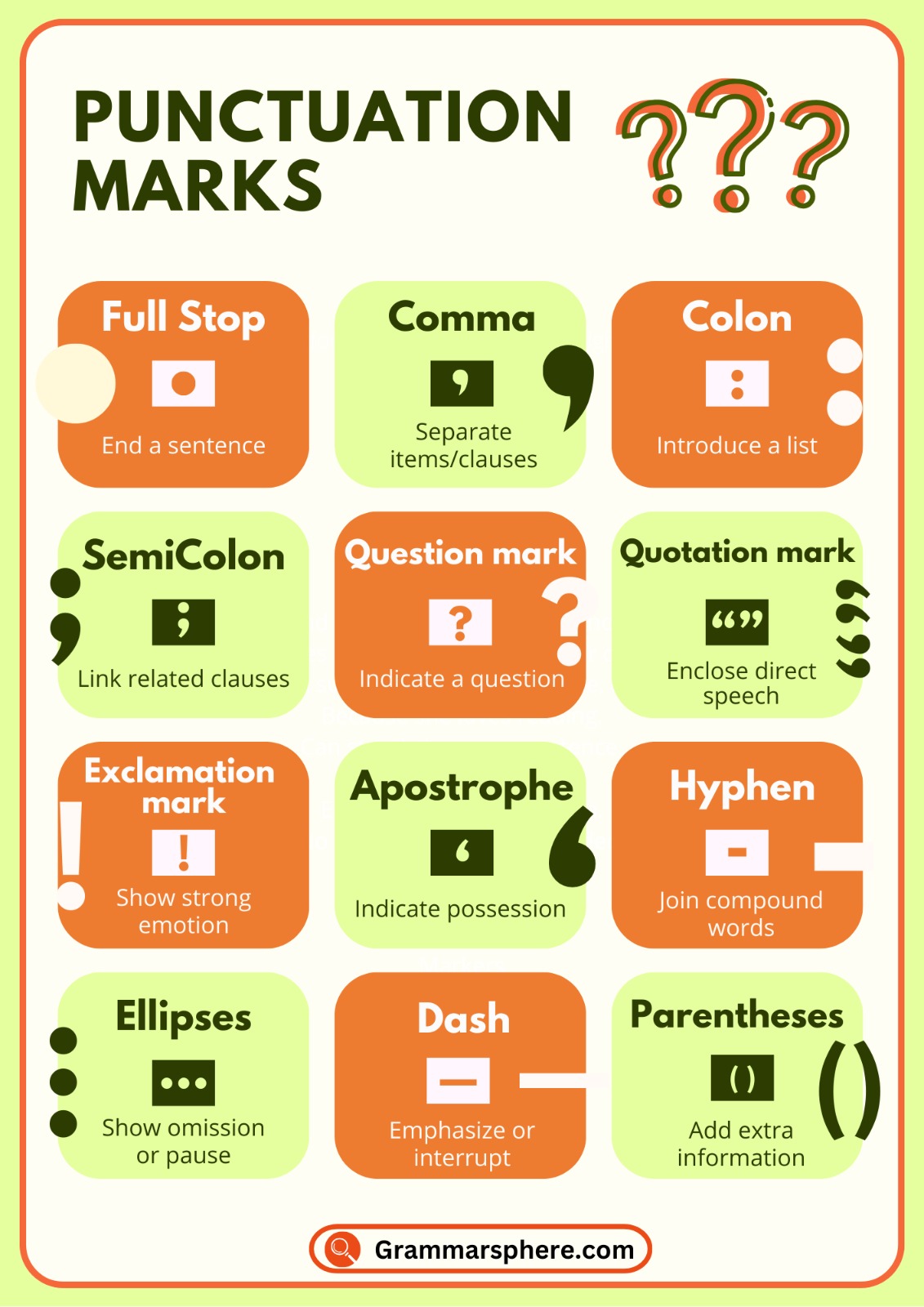
important Rules of Punctuations
Here are some key punctuation rules explained with examples:
1. Use a Period (.) to End Declarative Sentences
A period is used to indicate the end of a statement or declarative sentence. Avoid using it with question marks or exclamation marks.
✓ She enjoys reading books.
✗ She enjoys reading books?
2. Use a Comma (,) to Separate Items in a List
Commas are used to separate three or more items in a list. Place a comma before “and” in American English (Oxford comma).
✓ I bought apples, oranges, bananas, and grapes.
✗ I bought apples oranges bananas and grapes.
3. Capitalize the First Letter After a Period
Always begin a new sentence with a capital letter after a period.
✓ She went to the store. It was closed.
✗ She went to the store. it was closed.
4. Use a Question Mark (?) to End a Direct Question
Place a question mark at the end of a sentence when asking a direct question.
✓ What is your favorite color?
✗ What is your favorite color.
5. Use Quotation Marks (” “) to Enclose Direct Speech
Quotation marks are used to show someone’s exact words. Place punctuation marks inside the quotation marks in American English.
✓ She said, “I am happy.”
✗ She said, “I am happy”.
6. Avoid Apostrophe (‘) Errors in Possession and Contractions
Use apostrophes to show possession or to form contractions, not plurals.
✓ That is Sarah’s car.
✗ That is Sarahs car.
✓ They’re coming to the party.
✗ Their coming to the party.
Frequently Asked Questions About Punctuation
1. What is the purpose of punctuation?
Punctuation clarifies the meaning of sentences by indicating pauses, stops, or emotions, making the text easier to read and understand.
2. What is the difference between a colon and a semicolon?
A colon introduces lists, examples, or explanations, while a semicolon connects closely related sentences or separates items in a complex list.
3. When do I use a comma?
Use commas to separate items in a list, join clauses with conjunctions, or add pauses for clarity within sentences.
4. What are the 14 punctuation marks?
Period (.) Comma (,) Question Mark (?) Exclamation Mark (!) Colon (:) Semicolon (;) Quotation Marks (” “) Apostrophe (‘)
Parentheses ( ) Dash (—) Hyphen (-) Ellipsis (…) Slash (/)
Brackets [ ]
You May Also Like


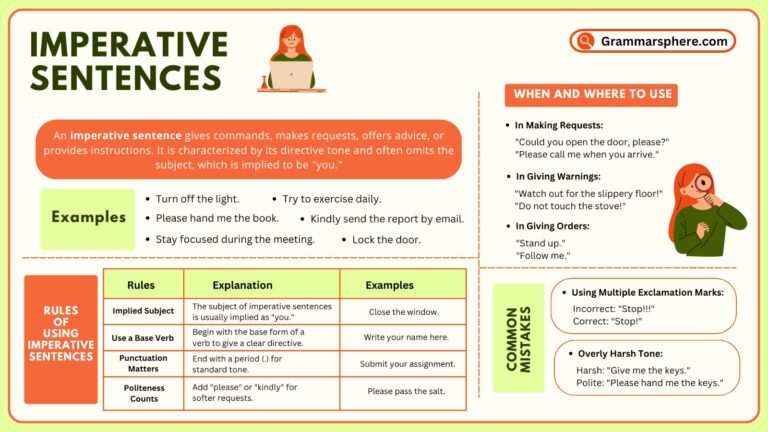

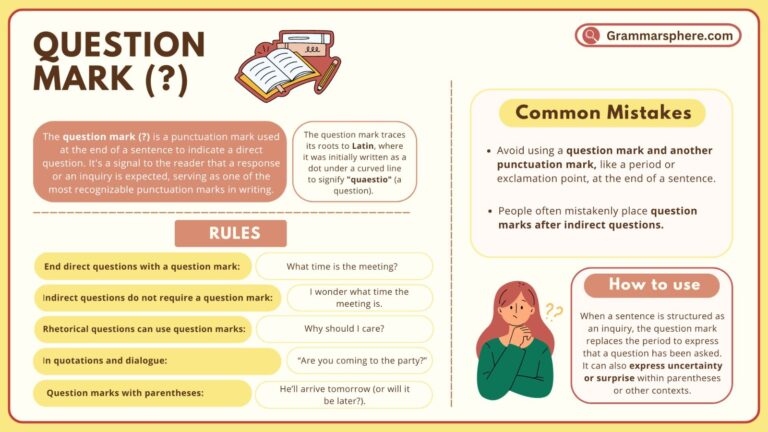
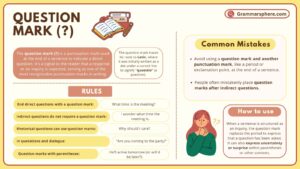
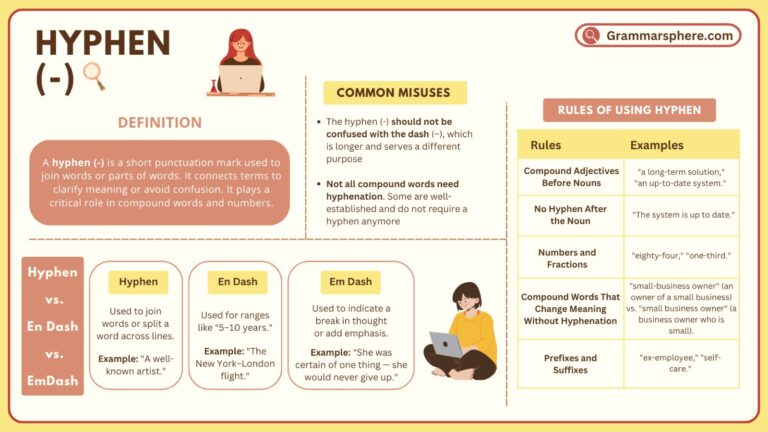

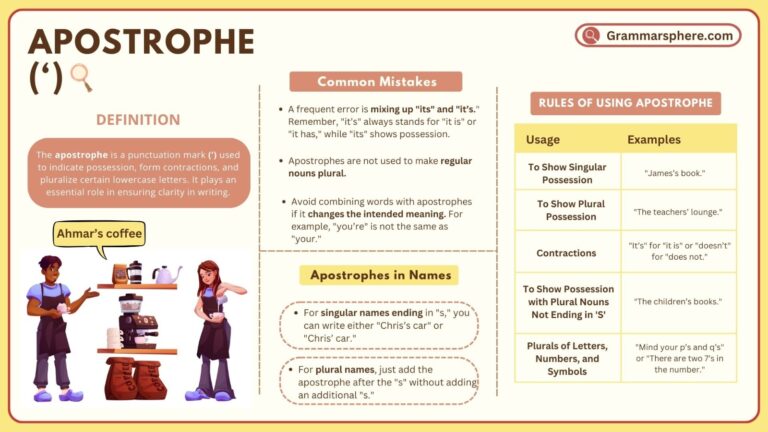
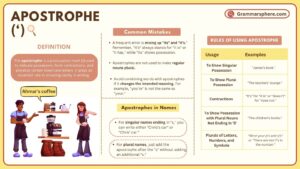
Leave a Comment